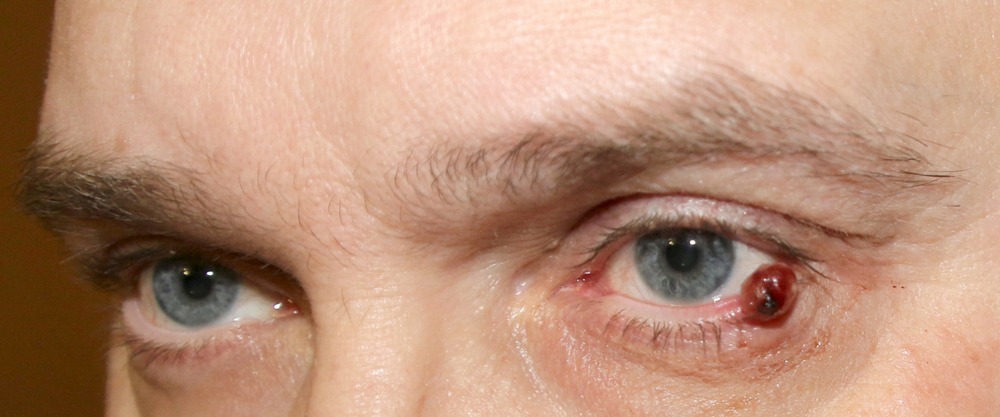Basal Cell Carcinoma is the most common type of eyelid cancer and is commonly found on the lower eyelids. It usually affects adults, but may also occur in children. Increased exposure to the ultraviolet rays from the sun can increase the risks of developing BCC.
Other BCC risk factors:
- Age – mostly occurring in people over 50 years of age
- Sex – more men are likely to develop BCC than women
- Genetics – a family history of skin cancer or if you’ve had BCC before, you have a good chance of developing it again
- Immune-suppressing drugs increase your risk of skin cancer due to a weakened immune system
- Fair skin – people with very light skin or that freckle or sunburn easily are more susceptible to skin cancer
Basal Cell Carcinoma Symptoms
- Eyelash loss
- Bleeding and Ulceration
- Skin crusting
- May be asymptomatic (lacking symptoms)
- Skin lesions that do not heal
- Paresthesia (tingling like “pins and needles”)
Diagnosis
Eyelid BCC is usually diagnosed by first examining your eyelid for abnormalities and then by removing a sample of skin for testing (biopsy) which is then sent to a pathologist for confirmation.
Basal Cell Carcinoma Treatment
The majority of basal cell carcinomas can be removed with surgery and the prognosis for BCC is usually very good. The most popular form of treatment for BCC is Mohs surgery also known as Mohs micrographic surgery or MMS. With Mohs surgery the eyelid tumor is removed layer by layer until the eyelid tissue is completely free of cancer cells. There are other forms of treatment for BBC, however, Mohs surgery is considered to be the most effective treatment with a five-year cure rate of 99 percent in 1,773 cases of basal cell carcinoma. Mohs surgery also involves removing the least amount of tissue which provides for the best cosmetic result.







